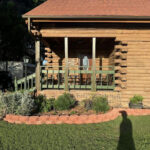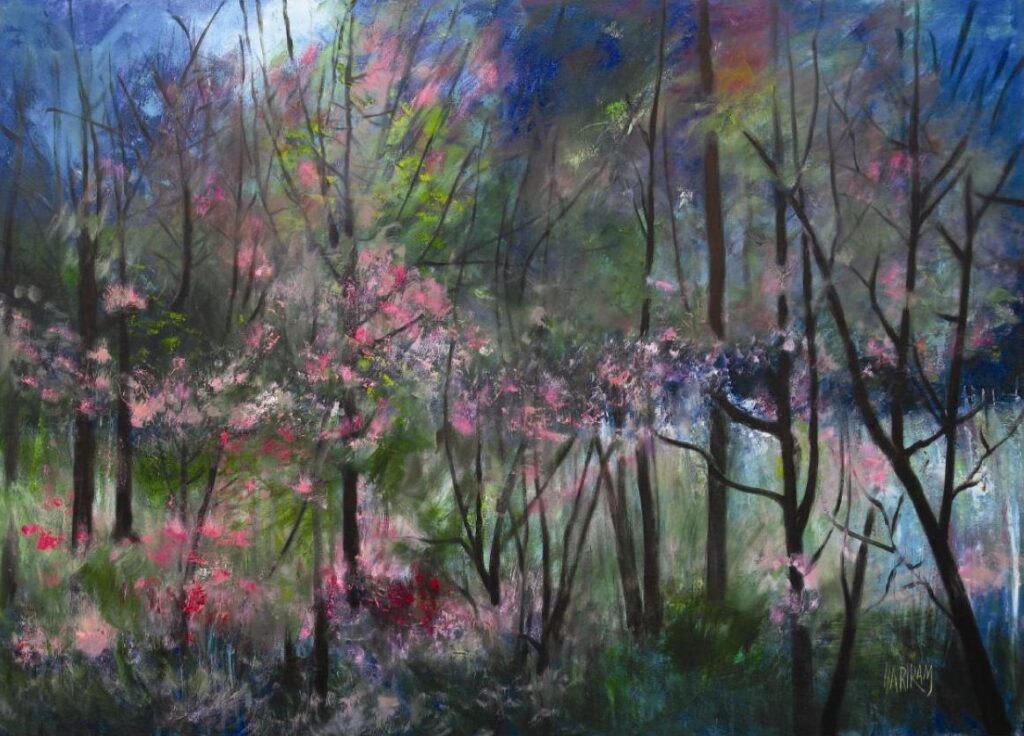The Enduring Allure of Landscape Art
In a world that’s rapidly urbanizing and increasingly digital, the timeless appeal of landscape art continues to captivate collectors, creators, and connoisseurs alike. Whether it’s the pastoral serenity of a countryside, the dramatic peaks of mountain ranges, or the vibrant bustle of natural flora, landscape art offers a window into the soul of the earth—and often, our own.
From the classical strokes of the Hudson River School to contemporary digital interpretations of nature, landscape art has evolved significantly while preserving its core purpose: to celebrate, document, and evoke the profound connection between humans and their environment. Today, with climate consciousness rising and a collective yearning for calm and clarity, landscape art stands more relevant than ever.
This article offers a comprehensive exploration of the rich tradition, current trends, and actionable pathways into the world of landscape art, whether you’re an artist, buyer, or admirer.
1. A Historical Perspective: Tracing the Roots of Landscape Art
Landscape art is one of the oldest forms of visual expression. Ancient frescoes, scrolls, and miniature paintings from civilizations such as Egypt, China, and India depicted nature’s elements not only for aesthetic value but also as symbols of spirituality and balance.
Key Movements in Landscape Art History:
-
European Renaissance: Artists like Albrecht Dürer and Leonardo da Vinci integrated natural scenery into religious and mythological contexts.
-
Romanticism: The 18th and 19th centuries saw painters like J.M.W. Turner and Caspar David Friedrich use landscapes to express emotional depth and awe for nature.
-
Impressionism & Post-Impressionism: Artists such as Claude Monet and Vincent van Gogh celebrated light, texture, and fleeting moments of nature.
-
Indian Traditions: Mughal miniatures, Pahari paintings, and Kalighat pat styles incorporated stylized natural backdrops, blending narrative and environment.
Insight:
Studying these traditions not only enhances aesthetic appreciation but also provides inspiration and context for today’s artists and collectors.
2. The Emotional and Psychological Impact of Landscape Art
Beyond visual beauty, landscape art carries emotional resonance. Numerous psychological studies affirm that depictions of nature can reduce stress, improve mood, and promote mental well-being.
Why It Resonates:
-
Connection to Nature: In increasingly artificial environments, landscapes offer a reconnection to organic forms.
-
Symbolism of Tranquility: Rivers, trees, mountains, and skies often symbolize peace, permanence, and hope.
-
Memory and Identity: Landscapes often evoke personal or cultural memories, grounding viewers in a sense of place and belonging.
Actionable Advice:
When choosing a landscape artwork for your space, consider what emotional tone you’re aiming to evoke—serenity, adventure, nostalgia, or grandeur—and select accordingly.
3. Contemporary Trends in Landscape Art
Modern artists are not just replicating what they see but reimagining landscapes through fresh mediums and lenses. Today’s landscape art spans traditional oil on canvas to immersive virtual reality experiences.
Emerging Trends:
-
Abstract Landscapes: Artists are exploring shapes and color to capture the essence of a place rather than literal depictions.
-
Urban Landscapes: Cityscapes and industrial zones now find place in the genre, blurring the line between natural and human-made environments.
-
Environmental Art: With rising ecological awareness, many artists are creating works that comment on climate change, deforestation, and conservation.
-
Digital Interpretations: Tools like AI, AR, and 3D rendering are opening new frontiers for how landscapes are conceptualized and shared.
Forward-Thinking Perspective:
For collectors, investing in digital and environmental landscape art offers not just a piece of decor, but a narrative aligned with global consciousness.
4. How to Start or Expand Your Collection of Landscape Art
Whether you’re a first-time buyer or an experienced collector, landscape art offers a rich avenue for investment and enjoyment.
Practical Steps:
-
Define Your Taste: Explore various styles—realism, impressionism, expressionism, or abstraction—to find what resonates with you.
-
Understand the Mediums: From oils and acrylics to watercolor and digital prints, each medium has its own aesthetic and maintenance requirements.
-
Set a Budget: Landscape art comes in all price ranges. Emerging artists often offer accessible options without compromising on quality.
-
Explore Diverse Sources: Look beyond mainstream galleries—consider art fairs, online platforms, local exhibitions, and art schools.
Actionable Advice:
Begin with smaller works or limited-edition prints by contemporary artists. Not only are they affordable, but you also support emerging talent while building a unique collection.
5. Landscape Artists to Watch
Several contemporary artists in India and around the world are redefining how we engage with landscape art.
Noteworthy Names:
-
Seema Kohli (India): Known for blending mythology and nature in spiritual landscapes.
-
Gogi Saroj Pal (India): Incorporates environmental and feminist themes into her textured natural works.
-
David Hockney (UK): Continues to innovate with vibrant, digital landscapes using iPads and photography.
-
Julie Mehretu (Ethiopia/US): Explores geographies and urban environments through layered abstractions.
Insight:
Follow artists whose work speaks to current socio-environmental realities, offering both aesthetic and intellectual enrichment.
6. Landscape Art in Interiors: More Than Decoration
Incorporating landscape art into interior spaces isn’t just about beautifying walls—it can dramatically shift the energy and tone of a room.
Design Integration Tips:
-
Scale Matters: Use large landscapes as focal points in living rooms or lobbies; smaller works are ideal for bedrooms or reading nooks.
-
Lighting Enhances Mood: Soft spotlights or natural daylight can elevate textures and depth.
-
Theme Consistency: Choose works that complement the color palette or mood of the space, such as coastal scenes for calming environments or forest imagery for earthy warmth.
Forward-Thinking Perspective:
Art advisors and interior designers are increasingly collaborating to select landscape pieces that enhance emotional well-being and spatial harmony.
Conclusion: The Future of Landscape Art is Expansive and Inclusive
Landscape art continues to evolve, embracing new technologies, ideologies, and audiences. As we face pressing environmental and social challenges, this genre offers both a mirror and a map—a mirror to reflect on where we are and a map to envision where we might go.
For artists, landscape art remains a fertile ground for creative exploration. For collectors, it’s a meaningful investment in both beauty and legacy. For everyday viewers, it’s a reminder to pause, observe, and reconnect—with nature, with space, and with self.
Final Thought:
In a time when we’re often disconnected from the natural world, landscape art doesn’t just decorate our spaces—it restores our sense of place. Engage with it not just as an object on a wall, but as a portal to something deeper and enduring.
- From Tradition to Tech: The Evolution of Landscape Art
- Explore the evolving world of landscape art—its history, trends, and tips for collecting meaningful, nature-inspired artworks.
- landscape art, contemporary artists
Related posts:
 The Complete Guide to Selecting the Best Italian Marble to Install in Your Home or Office
The Complete Guide to Selecting the Best Italian Marble to Install in Your Home or Office
 How to Choose the Perfect Soft Mattress Topper That Suits Your Comfort
How to Choose the Perfect Soft Mattress Topper That Suits Your Comfort
 The Hidden Power of Two Face Tape in Next-Gen Packaging Solutions
The Hidden Power of Two Face Tape in Next-Gen Packaging Solutions
 Confidential & Convenient: Get an STD Test at Home with Doctor on Call in Dubai
Confidential & Convenient: Get an STD Test at Home with Doctor on Call in Dubai
 Why Ricksmainroofing Is the Go-To Choice for Expert Roofing Services in New Canaan
Why Ricksmainroofing Is the Go-To Choice for Expert Roofing Services in New Canaan
 Why Artificial Turf Is Ideal for Beautiful, Low-Maintenance Galloway Lawns
Why Artificial Turf Is Ideal for Beautiful, Low-Maintenance Galloway Lawns
 Struggling with Flat Pillows? Discover the Lasting Fluff of Down Feather Options
Struggling with Flat Pillows? Discover the Lasting Fluff of Down Feather Options
 Designing inside the Wilderness Isn’t Easy—Here’s Why Log Cabin Contractors Are the Experts You Need
Designing inside the Wilderness Isn’t Easy—Here’s Why Log Cabin Contractors Are the Experts You Need








